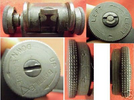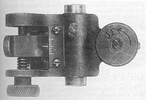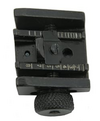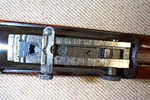You know it does get hard to fully explain and talk about this topic. I will try to clarify best I can.
I posed the question in regards to how iron sights are designed. I should have stated this upfront. Most of us have a good understanding of ballistics, so this is not about adjusting sights to a specific MOA to be on target at a specific distance. Ballistics calculators and scopes and vernier sights easily help us achieve that goal. I shoot BPCR and so most people use vernier sights if they use iron sights.
I was thinking and wondering if iron sights on rifles followed some sort of specific MOA design. A manufacturer can design the sights any way they want so the bullet impacts the target a specific way based on the cartridge ballistics. So, for example, let's take Bronco's M1A. He states his POI increases per MOA as he increases the distance. 3" at 100, 6" at 200, etc. So this means the manufacturer designed the sight setting to perform in this manner. My real world range experience is different and depends on which rifle. My general experience is that my rifles tend to shoot the same measurement of POI from POA at various distances.
So thinking about this from a military training standpoint, if a rifle's sight design was like that of Bronco's M1A, then you have to teach people to shoot much lower at longer distances, whereas, if the sights were designed to always have the same POI, then your POA does not change. So all that to say, how are most rifle sights designed?
I posed the question in regards to how iron sights are designed. I should have stated this upfront. Most of us have a good understanding of ballistics, so this is not about adjusting sights to a specific MOA to be on target at a specific distance. Ballistics calculators and scopes and vernier sights easily help us achieve that goal. I shoot BPCR and so most people use vernier sights if they use iron sights.
I was thinking and wondering if iron sights on rifles followed some sort of specific MOA design. A manufacturer can design the sights any way they want so the bullet impacts the target a specific way based on the cartridge ballistics. So, for example, let's take Bronco's M1A. He states his POI increases per MOA as he increases the distance. 3" at 100, 6" at 200, etc. So this means the manufacturer designed the sight setting to perform in this manner. My real world range experience is different and depends on which rifle. My general experience is that my rifles tend to shoot the same measurement of POI from POA at various distances.
So thinking about this from a military training standpoint, if a rifle's sight design was like that of Bronco's M1A, then you have to teach people to shoot much lower at longer distances, whereas, if the sights were designed to always have the same POI, then your POA does not change. So all that to say, how are most rifle sights designed?






